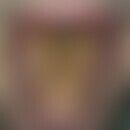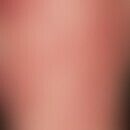DefinitionThis section has been translated automatically.
C2 deficiency (-deficiency) is a disorder that leads to a malfunction of the immune system and thus to a form of immunodeficiency. C2 deficiency is the most common form of complement deficiency (see also complement system).
Clinical manifestations include infections caused by encapsulated bacteria(Streptococcus pneumoniae, Neisseria meningitidis), such as meningitis, gonitis, pneumonia, or septicemia (Králíčková P et al. 2020). Furthermore, the deficiency of the C2 deficiency is also associated with a significantly increased risk (50% of those affected- Cole et al. 1985) for the development of autoimmune diseases(systemic lupus erythematosus, vasculitides). Thus, between 10 and 20% of those affected with C2 deficiency develop SLE.
Occurrence/EpidemiologyThis section has been translated automatically.
w>m.
You might also be interested in
ManifestationThis section has been translated automatically.
Affected are mainly infants and young children. Adolescents and adults are less common.
ClinicThis section has been translated automatically.
The severity of C2 deficiency varies widely. The complement defect and may also be clinically asymptomatic (see Králíčková P et al. 2020).
TherapyThis section has been translated automatically.
A causative treatment is not yet available. Prophylactic vaccination and/or long-term antibiotic prophylaxis are recommended.
Case report(s)This section has been translated automatically.
Cole et al (1985) found that about half of affected patients with C2 deficiency have an autoimmune disease, most commonly:
Johnson et al (1992) reported 2 families with C2 deficiency. They designated the defect in the first family as type I; no C2 protein was synthesized. In the second family, there appeared to be selective blockade of C2 secretion (type II). Measurement of conventional C2 hemolytic functional activity revealed no difference between the defects in the two families.
D'Cruz et al (1992) described a sibling with homozygous C2 deficiency who developed cutaneous necrotizing vasculitis and sicca syndrome. The mother suffered from seropositive rheumatoid arthritis.
Králíčková P et al (2020) reported 2 unrelated patients. The first patient suffered from recurrent otitis in childhood. He suffered osteomyelitis, meningitis with hearing loss, and pneumonia in adulthood. The second patinet suffered uncomplicated meningitis in preschool. He was later treated for recurrent upper respiratory tract infections. His sister was completely asymptomatic. Molecular genetics revealed the deletion 28 bp (c.841-849+19del28) in the C2 gene in all family members in homozygous form. This demonstrates the variability of clinical manifestation in homozygous carriers, ranging from asymptomatic cases to patients with severe complications. The diagnosis is often not made until adulthood.
LiteratureThis section has been translated automatically.
- Cole FS et al (1985) The molecular basis for genetic deficiency of the second component of human complement. New Eng J Med 313: 11-16.
- D'Cruz et al.(1992) Complement factor 2 deficiency: a clinical and serological family study. Ann Rheum Dis 51: 1254-1256.
- Einstein LP et al (1975) Biosynthetic defect in monocytes from human beings with genetic deficiency of the second component of complement. New Eng J Med 292: 1169-1171.
- Johnson CA et al (1992) Molecular heterogeneity of C2 deficiency. New Eng. J Med 326: 871-874.
- Klemperer MR et al (1966) Hereditary deficiency of second component of complement (C-prime-2) in man. J Clin Invest 45: 880-890.
- Králíčková P et al. (2020) Inherited C2-complement deficiency: variable clinical manifestation (case reports and review). Vnitr Lek 66: 87-91.
- Wahl R et al (1979) C2 deficiency and a lupus erythematosus-like illness: family re-evaluation. (Letter) Ann Intern Med 90: 717-718.
Outgoing links (6)
Complement system; Henoch-Schoenlein purpura; Lupus erythematosus systemic; Neisseria meningitidis ; Polymyositis; Streptococcus pneumoniae;Disclaimer
Please ask your physician for a reliable diagnosis. This website is only meant as a reference.




